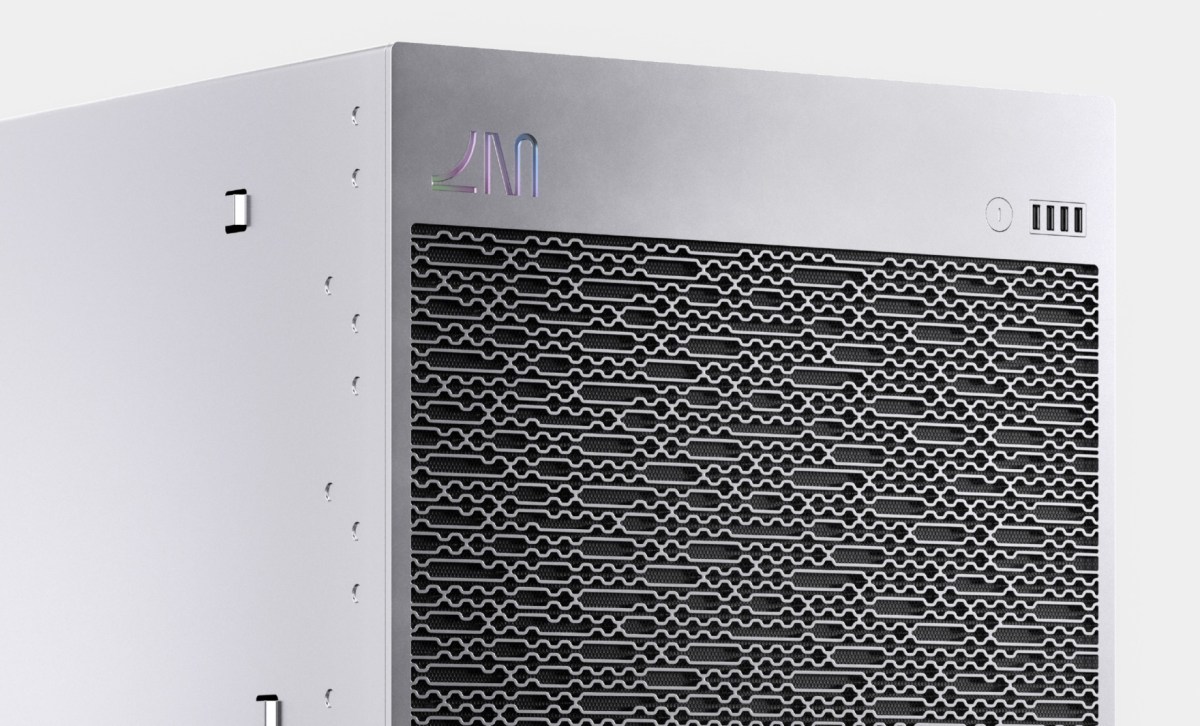- AI Brew: Stirring Up AI for Everyone
- Posts
- Lightmatter can solve generative AI’s energy crunch
Lightmatter can solve generative AI’s energy crunch
Plus LLMs helping rural Indians, Paralyzed Man Walks Again, What are CNNs and many more

📌 This week's AI Brew summary:
AI Spotlight 🚀: Lightmatter can solve generative AI’s energy crunch, NVIDIA's ACE is changing the gaming world with Generative AI
Real-Life AI Stories 🤖: LLMs helping rural Indians to get access to Government schemes in their own language, Paralyzed Man Walks Again (Thanks to AI-Powered Implants)
AI Jargon Buster 🤷♂️: Convolutional Neural Networks (CNNs) - this is how your iPhone uses FaceID
Cool Corner 😎: 10 AI courses you can take online for free
AI Spotlight 🚀
Lightmatter lands massive $154M funding round 💰: Generative AI models, like OpenAI's ChatGPT-4, are notorious power consumers, with the training of GPT-3 gulping an incredible 1.287 GWh, an amount that would power the average American home for a century. Lightmatter is innovating in this space, working on hardware using light to compute, a method far more energy-efficient than traditional electrical computations. This could be a game-changer, making energy-hungry generative AI more available to businesses and researchers alike.🔌⚡
🚀🧩Lightmatter's tech magic resides in their unique Photonic Integrated Circuits (PICs), micro optical components that harness light for computations, being superior in energy efficiency compared to traditional electronic chips. The promise of a commercial product looms on the horizon, expected to launch in 2024, paving the way for an era of more sustainable AI training.💽🌅
NVIDIA's ACE - Sparking Life Into Virtual Characters With Generative AI: 📣🌟 NVIDIA has unveiled a groundbreaking AI technology, dubbed as NVIDIA Additive Computing Engine (ACE) for Games. ACE serves as a generative AI powerhouse, capable of crafting stunningly realistic and interactive Non-Player Characters (NPCs), taking game realism to the next level. 🕹️🧠
💡🔮 A cornerstone of ACE's tech is a technique known as "neural radiance fields." These are specialized deep learning models that conjure up 3D shapes, appearances, and lighting of objects, rendering NPCs both visually believable and physically accurate. 👥🌐
🏃♀️🏞️ With ACE, NPCs gain abilities to interact authentically with their surroundings. From basic movements such as walking, running, jumping, and climbing, to more complex tasks like picking up and carrying objects, ACE-powered NPCs could interact more like real people in the game world. 📦🎭
🚀🎯 This innovation is a monumental leap in the gaming industry. By fostering lifelike, interactive NPCs, ACE has the potential to dramatically enhance immersion and gameplay, transforming the gaming experience. 🏆🎆

Real-Life AI Stories 🤖
Microsoft using AI to help rural Indians to access government schemes: 🚀🧠 The tech titan has leaped forward in the generative AI space with their latest creation, Jugalbandi. Designed as a smart chatbot, Jugalbandi has a mission to simplify the arduous task of navigating government programs in the multilingual landscape of India, a nation with nearly 22 official languages. 🇮🇳📚
🔗💬 At its core, the primary goal is to leverage the power of AI to obliterate language barriers, ushering in an era where access to information across various sectors becomes hassle-free for citizens. Interfacing flawlessly with WhatsApp, India's numero uno communication platform, Jugalbandi can potentially reach an audience of 480 million users right from the word go. ⚡📱
🔬💡 Under the hood, Jugalbandi is fueled by AI4Bharat's language and learning models. Its modus operandi involves translating and transcribing user messages, retrieving pertinent information, and delivering it back to the user in their mother tongue. It's akin to having a personal assistant, always ready to cater to your needs. 📨🌐
Meet Jugalbandi, a generative AI chatbot that is bridging the language barrier gap in India. msft.it/6001gjGlx
— Microsoft (@Microsoft)
5:45 PM • May 25, 2023
Paralyzed Man Walks Again, Thanks to AI-Powered Implants: Fantastic news from the world of AI! Gert-Jan Oskam, a courageous Dutchman left paralyzed following a cycling accident 12 years ago, has reclaimed the freedom of movement with the help of AI-powered implants. 🧠💡
The implants, resulting from a decade of research and building upon the work of French neuroscientist Grégoire Courtine, have re-established communication between Gert-Jan's brain and spinal cord. The game-changer? A "digital bridge" - a brain-computer interface developed by France's Atomic Energy Commission (CEA) that decodes brain signals in real time and dictates movement. 🌉🤖
"Just as I decide to make a step, the stimulation will kick in as soon as I think about it," says Gert-Jan, basking in his newfound "freedom." 🗣👣 His journey of surgeries, therapy, and intensive training is a beautiful testament to human resilience and technological advancement.💪🔬

AI Jargon Buster 🤷♂️: Convolutional Neural Networks (CNNs)
Convolutional Neural Networks are a specialized kind of artificial neural network that works exceptionally well with data that has a grid-like topology, like an image. An image is essentially a matrix of pixel values, and the spatial relationships of these pixels carry important information. The architecture of CNNs is designed to leverage these spatial relationships, which makes them excellent at tasks like object recognition within images.
Lets take a real-life example - CNNs are a fundamental component of modern facial recognition systems, including the Face ID feature on iPhones 🍏📱Let's dive into how a CNN might work in the context of Face ID on an iPhone:
1. Input Layer - Selfie Time! 🤳 When you look at your iPhone to unlock it using Face ID, the camera captures an image of your face. This image is represented as a 3-dimensional array of pixel values (height, width, and color channels) and serves as the input to the CNN.
2. Convolution - Seeking Facial Features 👀The convolution phase begins. The network uses filters to scan the image and detect low-level features such as edges, lines, and colors. It's like looking at your face through a collection of different lenses, each focusing on a specific type of detail.
3. Pooling - Reducing Complexity ⚙️ The network then applies a pooling operation, which simplifies the output from the convolution phase by reducing its dimensionality, while retaining the most important information. This is a bit like creating a rough sketch of your face that captures the essential features without all the minute details.
4. Repetition - Detecting Complex Features 🔁 The convolution and pooling steps are repeated multiple times, each time helping the network to "learn" more complex features of the image. By the final layers, the CNN is capable of recognizing high-level features like the shape of the eyes, nose, or mouth.
5. Fully Connected Layer - Identifying the Face 👤Finally, the fully connected layer takes all this information and uses it to classify the image - in this case, to determine whether it matches the face of the authorized iPhone user. If the face matches, the iPhone unlocks.
In a matter of moments, the CNN powering Face ID processes a complex array of visual information to recognize your face and unlock your iPhone. It's a remarkable feat of artificial intelligence that many of us use every day without a second thought!

Cool Corner 😎
Dive into the world of AI with this curated list of top-notch, free courses on Udemy
📧 Got a question or an AI topic you'd like us to cover? Email me at [email protected]
Hope you liked your cup of AI Brew - Share AI Brew with friends and family who might enjoy a weekly dose of AI caffeine! 🥳



Reply